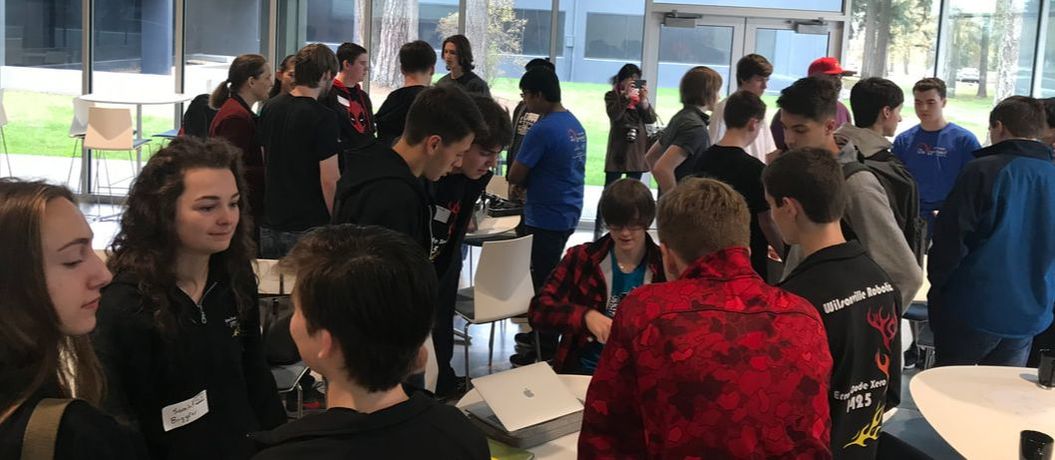When rapidly scaling up its workforce, DWFritz uses innovative onboarding and training strategies to ensure a consistent high level of skills among production workers.
Continued training for high tech workers is critical for keeping up with the rapidly changing automation and metrology market. For custom automation companies like DWFritz Automation, agile hiring and training practices help in quickly ramping up a skilled workforce for new projects.
The Portland Business Journal recently recognized DWFritz’s strong commitment to the skill and professional growth of its workforce by honoring the company with the 2018 Excellence in Training award. The award recognizes the company’s innovative approach to flexing and training its workforce, and for fostering a collaborative work environment with opportunities for continued training through DWFritz University, an online employee resource for knowledge acquisition and training.
“Many companies think training has to be expensive or done by experts,” said Elaine Lees, DWFritz’s vice president of organizational development and talent.
“When we set up DWFritz University, it was with the intent to utilize our own in house expertise. Everything we do focuses on the craftsmanship in how we conceive, design and execute on building advanced manufacturing solutions,” she said.
Five years ago, DWFritz had a small workforce of 60 people at its U.S. headquarters. Today, the business has grown into a mid-sized company with more than 265 employees in the U.S. and 310 employees working at 17 different geographic locations in China. This rapid growth led to the company’s 2016 investment in DWF University, a company website portal offering courses for onboarding, management training and individual training. The company also offers educational reimbursements, internships and mentorship programs to deepen and broaden its workforce talent.
Production workers increasingly need more applied math and problem-solving skills to succeed in the smart factories of the future, according to the Manufacturing Institute. Nearly 94% of manufacturing executives cite internal employee training and development as one of the most effective workforce development strategies, according to Deloitte and the Manufacturing Institute’s Skills Gap in U.S. Manufacturing 2015–2025 report.
Flexing the Workforce
Many workers on the production floor need additional skill training as manufacturers increasingly adopt emerging technologies, such as sensors, advanced robotics and sophisticated control systems. In China, skilled workers are often even harder to find than in the U.S., according to Lees.
To remedy this skills gap, DWFritz offered remedial training for new hires during a ramp up of its Chinese workforce. To get the team trained before they started work on the production floor, the company set up 4 peer trainers and 2 simulation machines where new workers could get 6 weeks of basic training, followed by working onsite with the team. This effective training strategy has helped mobilize the team ahead of schedule on machine repairs, upgrades and conversions.
During rapid onboarding in the U.S., DWFritz organizes specific jobs, like mechanical technicians, into smaller subgroups with a specific focus on only one type of build. Contractors and other employees then partner with senior employees to work on the project.
“Our build technicians are so much more than ‘production associates,’” said Steve Franceschini, DWFritz’s director of production operations. “They are highly skilled technical professionals that complement the designers, allowing us to work equally well on both repeat production builds and one-of-a-kind projects.”
Encouraging Interest in Smart Manufacturing
Manufacturers will face major challenges in recruiting skilled production workers and engineers through 2025, according to Deloitte and the Manufacturing Institute outlook report. The scarcity of STEM talent in high schools is one critical factor making recruiting difficult for manufacturing companies.

FIRST robotics teams discuss solutions for robot designs at a DWFritz problem-solving day.
To get the next generation interested in engineering and smart manufacturing, DWFritz is reaching out to students as young as age 12 participating in local FIRST robotics programs. More than 75% of alumni from FIRST teams later pursue careers in STEM fields.
DWFritz supports 10 local robotics teams in the Portland, Oregon area by providing grants to teams, hosting educational problem-solving days to help teams tackle issues with robot design, and welcoming teams to set up practice fields in unused warehouse space. The company has 9 employees who volunteer as mentors for the local teams, teaching students valuable engineering, marketing and project management skills needed for future tech careers.
“By reaching out to students, we can instill a passion for engineering and robotics in the younger generation,” said Martin Bamberger, a staff systems engineer at DWFritz and a mentor on a local FIRST team. “Robotics programs like FIRST help prepare students with valuable skills needed for future careers in technology.”
Critical skills in manufacturing are rapidly changing to meet the needs of the automated and digital economy. As smart factory technologies evolve, manufacturers will need to offer innovative training to attract, hire and retain skilled tech workers.
In her work of training and developing teams, Lees shares that she’s always been inspired by the words of poet and activist Maya Angelou: When you learn, teach, when you get, give.
“Formal education can prepare you to learn,” said Lees. “But in an environment like ours where we are innovating every day, we rely on our core values of collaboration and finding a better way to help influence a fluid giving and sharing environment.”
